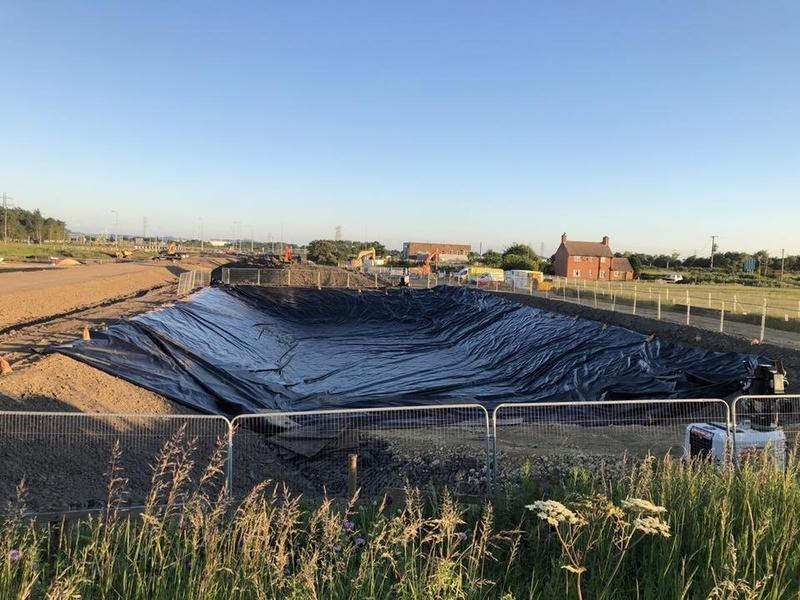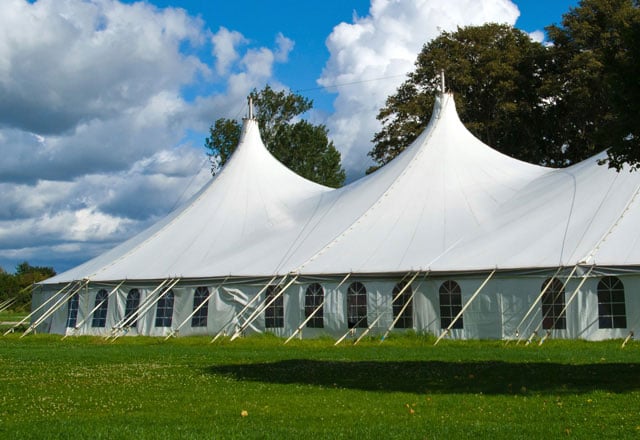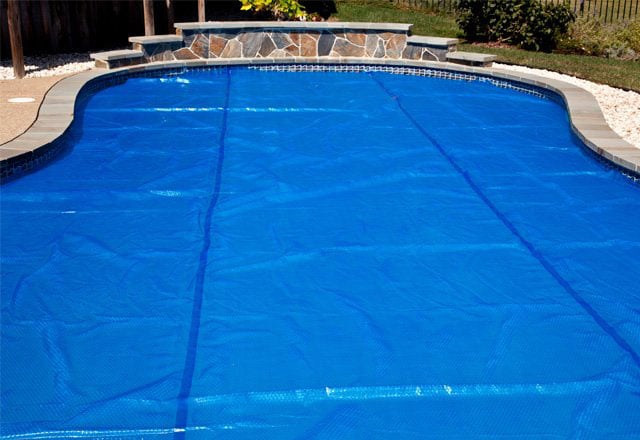Hot wedge welding technology represents the pinnacle of thermoplastic joining methods, offering unparalleled precision, durability, and efficiency for industrial fabrication needs. Hot wedge welding machines utilize advanced thermal bonding techniques to create seams that are as strong as or even stronger than the base materials themselves. As the industry leader in hot wedge welding equipment, Miller Weldmaster continues to pioneer innovations that set the standard for weld quality and performance across diverse manufacturing sectors.
What Defines Hot Wedge Welding Machines and Their Role in Industrial Fabrication
Understanding Hot Wedge Welding and Its Importance for Thermoplastics
Hot wedge welding technology employs specialized machines that use a heated metal wedge to melt and join thermoplastic materials under precise conditions. Operating at controlled temperatures between 370°C to 493°C, these sophisticated systems create permanent bonds through the careful application of heat and pressure. This welding technique has become essential across industries where watertight, airtight, and structurally sound seams are non-negotiable requirements.
The fundamental importance of hot wedge welding lies in its ability to create molecular bonds between compatible materials without adhesives or mechanical fasteners, resulting in seamless connections that maintain material integrity and performance characteristics. Unlike traditional sewing methods that create perforation points, hot wedge welders produce solid seal connections that eliminate potential failure points while ensuring consistent weld quality across production runs.

How Hot Wedge Welding Machines Deliver Strong and Reliable Seams
The exceptional strength of seams created by hot wedge welding machines comes from the precise control of three critical variables: temperature, pressure, and speed. The heated wedge is precisely positioned at the weld point to melt thermoplastic coatings while sophisticated pressure systems featuring pinch rollers or press wheels create hermetic seals during the welding process.
Advanced temperature control systems maintain optimal heat levels for different material thicknesses, ensuring consistent quality whether welding materials from ¼ inch to 1 inch thick. This remarkable precision enables hot wedge welders to deliver unmatched reliability and repeatability in production environments, making them indispensable for high-standard manufacturing operations. The process creates straight seams with uniform heat distribution, eliminating the variability often seen with manual welding techniques.
New Developments in Hot Wedge Welding Technology
Sustainability and Efficiency Improvements in Hot Wedge Welding
Modern hot wedge welding equipment has made impressive strides in environmental performance. The latest machines feature silent operation and nearly smokeless welding processes, making them ideal for both factory and field applications. These improvements reduce workplace pollution while creating healthier working environments for operators.
Energy efficiency has also been enhanced through optimized heating elements and intelligent power management systems. Multiple power options like 800W and 1100W configurations allow operators to match energy consumption precisely to material requirements, reducing waste and lowering operational costs while maintaining weld integrity. The light weight design of portable units also contributes to overall efficiency in field applications.
Advantages of Choosing Hot Wedge Welding Machines for Manufacturing Processes
Why Hot Wedge Welding Machines Outperform Other Fabric Joining Techniques
Hot wedge welding consistently outperforms alternative joining methods like sewing or adhesives when working with thermoplastic materials. Unlike sewn seams that create perforation points and potential failure areas, hot wedge welded seams maintain complete material integrity while providing superior strength, water resistance, and durability.
The precision of hot wedge technology ensures consistent quality across production runs, eliminating the variability often seen with manual sewing operations. These performance advantages translate directly to enhanced product reliability, reduced warranty claims, and improved customer satisfaction. The method is particularly suitable for applications requiring watertight or airtight seals, such as tanks, banners, and containment systems.
Cost and Time Advantages for High-Volume Production
For high-volume manufacturing operations, hot wedge welding machines deliver compelling economic benefits. Their portable design allows welding on soft or uneven surfaces without tracking tables, increasing production flexibility while reducing facility requirements. The consistent weld quality also significantly reduces defect rates and associated rework costs.
Production speed can be optimized with various machine configurations, from compact lightweight models like the Triad Extreme for geomembrane applications to heavy-duty systems like the T600 for large thermoplastic material welding. This scalability ensures manufacturers can match equipment capabilities precisely to production volume requirements while maintaining the ability to create strong, durable seams across different material types.
Challenges to Consider When Investing in Hot Wedge Welding Technology
Material Compatibility and Limitations in Hot Wedge Welding
While hot wedge welding technology excels with many materials, understanding compatibility limitations is essential for successful implementation. The process works optimally with thermoplastic geomembranes, including HDPE, LDPE, and PVC materials, as well as coated plastics and synthetic fabrics with thermoplastic coatings.
However, materials without thermoplastic properties or with extremely high melting points may require alternative joining methods. Understanding these limitations early in the product development process helps manufacturers avoid costly redesigns and ensures appropriate welding technology selection. The method is also subject to thickness limitations, with most machines handling materials up to 1 inch thick effectively.

Training and Maintenance Needs for Hot Wedge Welding Machines
Achieving optimal results with hot wedge welding equipment requires proper operator training and regular maintenance. Technicians must understand material behavior, temperature management, and quality inspection techniques to consistently produce high-quality welds. The welding process demands precise control over multiple variables simultaneously.
Regular maintenance of heating elements, pressure systems, and drive mechanisms is essential for maintaining precision and preventing costly downtime. Establishing comprehensive training programs and preventive maintenance schedules represents a critical success factor when implementing hot wedge welding technology. Proper maintenance also ensures the heated metal wedge maintains optimal performance across extended production runs.
Evaluating Hot Wedge Welding Against Other Welding Techniques
Hot Wedge Welding vs Hot Air Welding: Choosing the Right Method
When comparing hot wedge welding to hot air alternatives, several key factors influence the optimal selection. Hot wedge systems typically deliver more consistent heat application directly to the weld interface, resulting in stronger, more reliable seams for critical applications. The controlled pressure applied through rollers ensures uniform bonding across the seam width.
Hot air systems offer advantages for complex geometries and detailed work, but may not match the production speed and consistency of hot wedge technology for straight-line welding operations. The application requirements, production volume, and specific material characteristics should guide this important technology choice. Both techniques are suitable for thermoplastics, but hot wedge excels in linear fabrication scenarios.
Hot Wedge Welding vs RF Welding: Understanding Cost and Precision Trade-Offs
Radio frequency welding offers different capabilities compared to hot wedge welding machines. While RF welding excels at creating complex patterns and selective bonding areas, it typically requires higher initial investment and more complex setup procedures.
Hot wedge welding technology generally provides superior cost-effectiveness for linear seams and large-format materials, with machines like the T600 designed specifically for heavy thermoplastic applications where RF welding would be impractical or cost-prohibitive. The choice between methods often depends on the range of materials being processed and the complexity of the required seam patterns.
Hot Wedge Welding vs Traditional Sewing for Thermoplastics
The comparison between hot wedge welding and traditional sewing methods highlights significant performance differences. While sewing has lower equipment costs initially, the long-term expense of thread, needles, and higher labor requirements often makes hot wedge welding more economical over time.
More importantly, hot wedge welded seams provide watertight integrity that sewn seams cannot match, crucial for applications like swimming pool liners, pond liners, and flexible tank materials. The elimination of stitch holes and the creation of molecular bonds between materials results in dramatically improved product performance and longevity. This makes hot wedge welding the ideal choice for applications subject to harsh environmental conditions.
| Method | Seam Strength | Watertight/Airtight | Production Speed | Material Versatility | Cost (Equipment) | Suitable for Complex Geometries? |
| Hot Wedge Welding | Excellent | Yes | High | Thermoplastics | Medium | Limited |
| Hot Air Welding | Good | Yes | Moderate | Thermoplastics | Medium | Best for curves/edges |
| RF Welding | Excellent | Yes | High | Limited thermoplastics | High | Excellent |
| Sewing | Low–Moderate | No | High | Almost all fabrics | Low | Best for complex shapes |
Industries and Products Supported by Hot Wedge Welding Machines
Medical Devices and Hot Wedge Welding: Ensuring Precision and Sterility
The medical industry benefits significantly from hot wedge welding technology for manufacturing critical fluid containment products. The hermetic seals created by hot wedge welding machines are essential for IV bags, blood storage containers, and sterile packaging systems where absolute containment is non-negotiable.
The precision temperature control and consistent pressure application of modern hot wedge equipment ensures that sensitive medical-grade materials maintain their properties throughout the welding process, preserving sterility and product performance in these demanding applications. The ability to create seamless, contamination-proof seams makes this method particularly suitable for medical device manufacture.
Automotive and Aerospace Applications for Hot Wedge Welding Machines
Hot wedge welding machines have become indispensable in transportation manufacturing for producing car covers, truck awnings, convertible tops, and specialized protective coverings. The durable, weatherproof seams created by hot wedge technology withstand the extreme conditions these products face in daily use.
In aerospace applications, the lightweight yet strong bonds created by hot wedge welding contribute to fuel efficiency while maintaining critical safety standards. Models like the T300 “The Transformer” offer the flexibility needed for these specialized manufacturing environments, where both precision and versatility are essential for successful fabrication.
Tents, Tarps, and Specialized Products Created with Hot Wedge Welding
The production of large-format products like commercial tents and promotional materials relies heavily on hot wedge welding technology. The consistent, airtight seams created by machines like the T300 and T600 Hot Wedge machines ensure reliable performance in demanding outdoor conditions.
Swimming pool liners, geomembranes for landfills, and water conservation projects also depend on the watertight integrity that only hot wedge welding can consistently deliver at production scale. The Triad Extreme geomembrane welding machine, with its compact design has become the standard for these critical environmental applications. Civil engineering projects frequently specify hot wedge welded thermoplastic films for their superior durability and containment properties.
Alternative Welding Techniques Compared to Hot Wedge Welding Machines
Evaluating Hot Air Welding as an Alternative to Hot Wedge Welding
Hot air welding provides an alternative approach to thermoplastic joining, offering advantages for complex three-dimensional shapes where hot wedge equipment may have access limitations. However, hot air systems typically cannot match the consistency and production speed of hot wedge technology for straight seams and high-volume applications.
Programmable dual-function machines like the T300 Flex bridge this gap by offering both hot wedge and hot air capabilities in a single unit, allowing manufacturers to select the optimal technique for each specific application while maximizing equipment utilization. This flexibility makes such machines a popular choice for facilities handling diverse product ranges.
Considering RF Welding for Specific Fabric Welding Needs
Radio frequency welding excels at creating complex patterns and selective bonding in specific materials, particularly PVC and polyurethanes. However, RF systems have higher initial costs and more limited material compatibility compared to versatile hot wedge welding machines.
For manufacturers working with diverse materials or requiring flexible production capabilities, hot wedge technology typically provides better overall value and adaptability while still delivering exceptional weld quality for most common thermoplastic applications. The choice often depends on whether the application requires complex geometries or straightforward linear seams.
Why Partner with Miller Weldmaster for Hot Wedge Welding Machines and Technology
Tailored Hot Wedge Welding Solutions for Specialized Needs
Miller Weldmaster stands apart through its commitment to developing customized hot wedge welding solutions for unique manufacturing challenges. Rather than offering one-size-fits-all equipment, Miller Weldmaster engineers collaborate with clients to understand specific material requirements, production volumes, and quality standards.
This consultative approach ensures that each hot wedge welding machine perfectly matches the application requirements, whether for geomembrane installation, automotive component manufacturing, or specialized industrial products, maximizing return on investment and production efficiency. The company’s expertise spans the full range of thermoplastic materials and welding applications.
Training, Support, and Service Programs for Hot Wedge Welding Machines
Beyond superior equipment design, Miller Weldmaster provides comprehensive training programs that enable operators to maximize the capabilities of their hot wedge welding technology. These programs cover material selection, parameter optimization, quality testing, and preventive maintenance.
Miller Weldmaster’s global support network ensures rapid response for service needs, minimizing downtime and maintaining production continuity. This commitment to customer success extends throughout the equipment lifecycle, making Miller Weldmaster the trusted partner for manufacturers who depend on reliable hot wedge welding machines.
Get Started with Hot Wedge Welding Machines and Technology from Miller Weldmaster
Take the next step toward manufacturing excellence by exploring the comprehensive range of hot wedge welding machines from Miller Weldmaster. Our engineering team is ready to analyze your specific application requirements and recommend the optimal welding solution for your production needs.
Contact Miller Weldmaster today for detailed specifications, customized quotations, and equipment demonstrations that will clearly illustrate the advantages of our hot wedge welding technology for your specific materials and products. Discover why leading manufacturers worldwide trust Miller Weldmaster for their most demanding thermoplastic welding applications.






